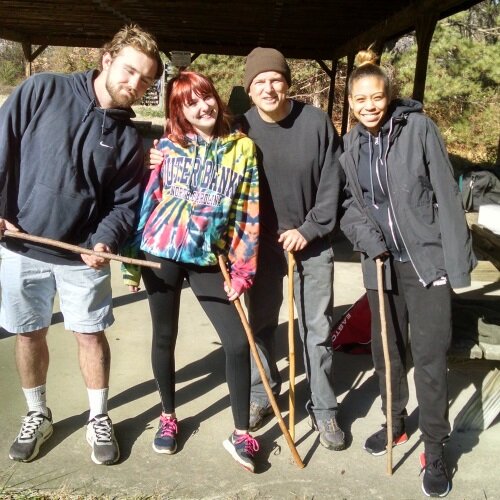Fencer’s Grip
It is Mettlecraft Month at Cabal Fang! This year's goal of 100 Bodybuilders in under 20 minutes. Play the home game and do it with us! Post links to photoes, blogs and videos in the comments below. We're taking our shot as a club on Tues., 11/26. That's why every November T.I. contains Bodybuilders -- to help you establish a base camp from which to make your assault on 100.
And now for this week's T.I.!
Hammer Grip
Pick a name: the dreaded false dichotomy, the dualistic fallacy, black-and-white thinking, or the false choice. By any name it is a dangerous adversary. Examples? Here you go.
I stand by my previous position on firm weapon grip. I was right about that as far as it goes. Behind the scenes however, I got married to hammer grip. Fencer's grip, it seemed to me, was just too loose.
And then I tore the sub-sheath of my ECU wrist tendon, and learned from the immortal Mark Hatmaker that stabbing in hammer grip can tweak your wrist. This is why swordsmen hold swords in the fencer's grip -- thumb along the spine of the weapon. This only reveals itself fully when stabbing full force against a heavy bag, pell, or war post. Light bulbs went off.
You don't choose a grip the way you choose a spouse. You tuck the thumb when swinging/slashing and switch to fencer's grip when poking/stabbing. It's so painfully obvious that it's embarrassing to admit that it took ten years to figure it out.
This will happen in life all the time. Decisions will look like either/or choices when they are not.
Master your life in the same way that you master your weapons of choice.
Step back. Question the questions. Switch, flex, move, breathe, adapt.
Do not be deceived.
Undeceived: Training Involution #184
Warm-up thoroughly. Jog, jump rope, lightly shadowbox, etc. for a total of at least 8 minutes.
Blend in 25 Bodybuilders per day between now and next Tuesday's challenge of 100. Don't deceive yourself into thinking you must get all 25 in a row. The idea is to establish a soreness-free baseline. So, if you split them up two or even three ways -- let's say 10 in the morning, 10 around lunch, and 10 more at night, or maybe 12 early and 12 later -- you will likely get even better results because you'll be able to do more total reps. Do as many as you like as often as you want, like maybe 4 every hour, as long as you're not sore. I repeat: the only rule is that you get a minimum of 25 without next day soreness.
Blend in meditation and/or contemplation. Instead of doing one long sit each day -- you are doing your internal work every day, right? -- spread it out. Do 10 minutes twice a day, 8 minutes three times a day, 2 minutes every waking hour, or if you're feeling particularly motivated, pray continually.



































